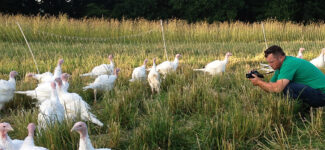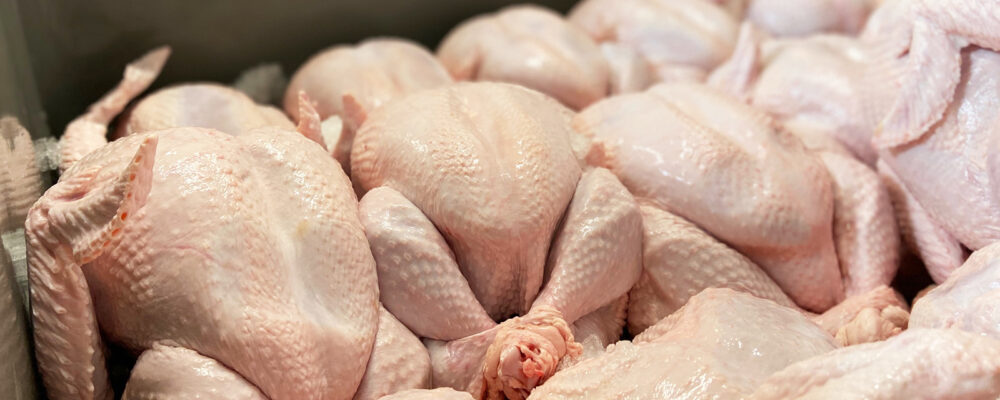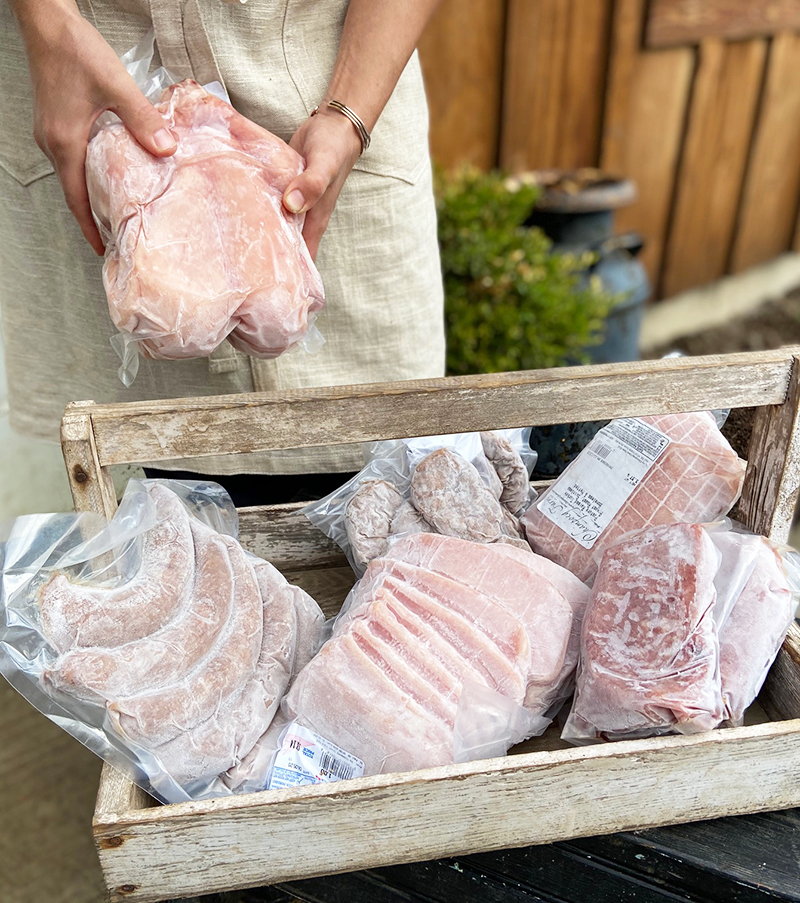No products in the cart.
Welcome to our website!
We're so happy you stopped by. Please let us know if you have any questions for us.

We're so happy you stopped by. Please let us know if you have any questions for us.
Don't forget to sign up for our mailing list to receive periodic emails about new products and upcoming events! You will also receive a Coupon Code for your first order.

There is a lot of back and forth about fresh birds versus frozen birds. We see the merits of both and offer both options to our customers. We offer an option for Fresh Whole Turkeys at Thanksgiving but all of our Chicken and Turkey Cuts are sold frozen.
First of all, logistically we can’t offer fresh, pasture raised birds year round. We prefer to cooperate with our Oregon growing season so our turkeys, chickens and geese are raised during the warmer weather months and processed before the cold rain sets in. This allows us to grow birds that receive all the benefits of the pasture but it also means we freeze them after processing so we can still offer delicious poultry year round. By deep freezing our poultry, it locks in freshness and flavor so it still tastes wonderful weeks or even several months later. It also allows us to offer packages of wonderful cuts such as thigh, drumsticks or breast roast year round.
This is where it can get tricky in the industry. A lot of conventional turkeys sold at Thanksgiving are labeled ‘fresh’ even though they were raised months earlier. Think about it… it seems implausible that all 46 million turkeys eaten around Thanksgiving each year were actually processed just days beforehand. The USDA’s definition of fresh is: “Any raw poultry, poultry part, or any edible portion thereof whose internal temperature has ever been below 26 degrees Fahrenheit.” USDA Food Safety & Inspection Service This means they have actually been ‘lightly’ frozen and thawed out before being sold. This seems more problematic and disingenuous than just deep freezing them and calling it such. Frozen sometimes gets a bad reputation, but in reality, it is a marvelous way to preserve and store meat for later use. Problems come in when it is frozen and thawed multiple times causing freezer damage.
We raise several batches of turkeys throughout the spring, summer and into the fall. This coordination allows us to selectively process them when they reach desired weight ranges so we can offer birds in a wide variety of sizes from 10 pound smalls to 25 pound extra larges. It also helps us to fill orders for larger clients like New Seasons Market that logistically need earlier distribution. A lot of careful detail and effort go into getting hundreds of turkeys from our farm all the way to individual customer’s tables in time for the big day. We choose to deep freeze our turkeys (and other poultry) after processing because we believe this is the best method for preserving flavor and nutrients, but it also means our birds have to be labeled ‘previously frozen’. But that should only encourage you that it was raised outdoors on pasture when it was best for the birds and our Oregon growing season.

That all being said about frozen poultry, we also offer an option to enjoy authentically FRESH turkeys for Thanksgiving. We start a batch of hens in the fall so they will be in the medium size range (14 – 18 pounds) just in time for the holiday. We process them just days before Thanksgiving and offer these fresh birds to customers who come out to the farm the weekend before the holiday. It eliminates the sometimes tricky step of thawing out a frozen bird with enough time to spare. But mostly, it is a truly unique experience to reserve a bird that was raised outdoors (unless the weather gets really terrible and causes us to bring them indoors for a time) here in Oregon where customers can come out to the farm to select their bird right where it was raised and processed. We love seeing customers that weekend and feel it a privilege to share in the joy and anticipation of the holiday ahead.
The million dollar question is whether or not there is a difference in taste and quality between fresh or frozen birds. Our experience tells us there is very little difference when frozen and stored correctly. But, we also enjoy the pleasure of eating genuinely fresh birds as well and we feel it only adds to and enhances the Thanksgiving experience. We are grateful for the opportunity to raise wholesome food and for the customers who support our efforts.
Here’s a bit more information from an article we found about the chemical changes that occur when meat is frozen. Freezing is one of the most effective methods of preserving meat. When meat and meat products are stored at temperatures below -10˚C (14˚F), microbial growth and enzyme reactions are essentially curtailed, and hence, quality loss is minimized.
However, physical and chemical reactions can still occur in meat during freezing, storage, and subsequent thawing.
Chemical changes in frozen meat during storage include discoloration and development of oxidative rancidity (which result from oxidation of myoglobin and unsaturated lipids, respectively) and texture hardening due to protein denaturation and aggregation.
These events are influenced by the rate of freezing and thawing, the duration of frozen storage, fluctuations of the freezer temperature during storage, and the atmospheric condition of the frozen meat.
When it comes to the processed meat (such as deli meats), the ingredients added to the meat (such as nitrates) and the specific processing procedures, such as grinding, chopping, emulsification, and restructuring, can influence the quality and shelf life of the frozen products. Also, antioxidants are often added to inhibit salt-induced oxidation in frozen meat products.
To continue reading, here’s a link to the full article https://www.theironyou.com/2012/08/frozen-meat-101.html
No products in the cart.
